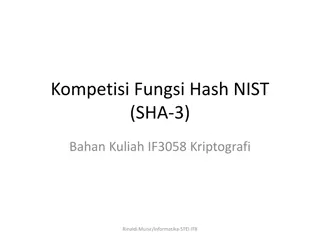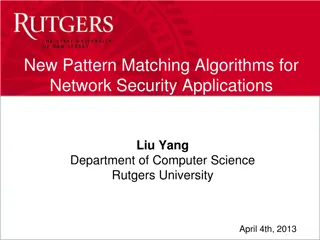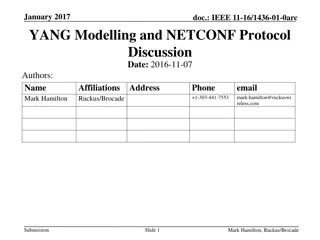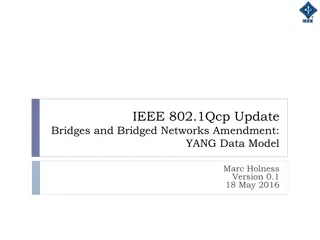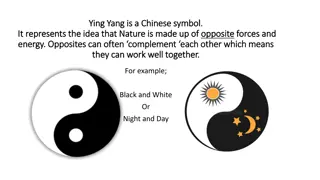
Contribution of Mixing Effects to CP Asymmetry at University of South China
Explore the research conducted at University of South China on the mixing contribution to the measured CP asymmetry of certain particles. The study involves calculations, experimental values, and implications for CP violation.
Download Presentation

Please find below an Image/Link to download the presentation.
The content on the website is provided AS IS for your information and personal use only. It may not be sold, licensed, or shared on other websites without obtaining consent from the author. If you encounter any issues during the download, it is possible that the publisher has removed the file from their server.
You are allowed to download the files provided on this website for personal or commercial use, subject to the condition that they are used lawfully. All files are the property of their respective owners.
The content on the website is provided AS IS for your information and personal use only. It may not be sold, licensed, or shared on other websites without obtaining consent from the author.
E N D
Presentation Transcript
UNIVERSITY OF SOUTH CHINA ?? ? mixing contribution to the measured CP asymmetry of ? ?? Sheng Yang( ) University of South China In collaboration with :Zhen-Hua Zhang( ) & Xin-Heng Guo( ) Based on: JHEP 10 (2020) 020, [arXiv:2005.09157] 2021/5/3 1/21
Outline UNIVERSITY OF SOUTH CHINA Introduction ?0 ? mixing contribution to CP asymmetry ? ?? CP of ? ?? ??with the amplitudes extracted Calculation of A?? from experiment Summary ?? ? mixing contribution to the measured CP asymmetry of ? ?? 2/21
UNIVERSITY OF SOUTH CHINA Introduction ? ?? CP ?? ? mixing contribution to the measured CP asymmetry of ? ?? 3/21
?0 ? mixing contributions to CPV UNIVERSITY OF SOUTH CHINA CPV in B ?+? ?: around the vicinity of ?0(770) X.-H. Guo et al., PRD 63(2001)056012 C. wang, Z.-H. Zhang et al., EPJC 75(2015)536 Decay amplitudes of B ?+? ? Interference of ?0 ?+? and ?(782) ?0 ?+? ?? ?? ? 2? ?? (1) = ? ??+ ? ?? ? ?? CP 2+ ??? ?(? = ?,?) ??= ? ?? 2 = 4620 220????? 170???????2 ? ???? 2 = 6100 1800????? 1110???????2 ???? C. Wolfe et al, PRD 83 (2011) 077301 Strong phase ? from: ?? and ??: ? = ?(?) S. Gardner et al., PRL. 80(1998)1834 ?0 ? mixing contributions to ?+? ? ?? ? mixing contribution to the measured CP asymmetry of ? ?? 4/21
? ?+?? UNIVERSITY OF SOUTH CHINA C. Wang, ZHZ, Z.-Y. Wang, and X.-H. Guo, EPJC75 2015)11, 536 [arXiv: 1506.00324] LHCb, PRL.124(2020)031801 [arXiv: 1909.05211] ? ?? CP ?? ? mixing contribution to the measured CP asymmetry of ? ?? 5/21
Motivation UNIVERSITY OF SOUTH CHINA Play with ?0 ? mixing in an inverse way 4-body B meson decay ? ? 3?: the invariant mass of ?+? ?0around ?(???) Decay amplitudes of ? 3?? : Interference of ? 3? and ?0 ? 3?. ? = ? ?? + ???? ? ?? ?? 3? (2) ? ?? CP ?? ???(?) ?? ?? + ??? very small, for ? ?? negligible but for ??? ???non-negligible. ?? ? mixing contribution to the measured CP asymmetry of ? ?? 6/21
Our result UNIVERSITY OF SOUTH CHINA CPV of ? ?? ?? ???= ??? ???+ A?? ??? (3) ? ?? CP ???= 0.02 0.04 ???: Experimental value measured by Bell and BaBar; PDG A?? ??? ???: the conventionally defined CPV of ? ?? , excluding ?0 ? mixing contribution; ??? ??: The ?0 ? mixing effect contributing to A?? ???. ?? 0.01 0.02 A?? +0.01 This work A?? ?? ? mixing contribution to the measured CP asymmetry of ? ?? 7/21
UNIVERSITY OF SOUTH CHINA ?? ? mixing contribution to CP asymmetry of ? ?? ? ?? CP ?? ? mixing contribution to the measured CP asymmetry of ? ?? 8/21
??? The derivation of ??? UNIVERSITY OF SOUTH CHINA ??? ) including ?0 ? mixing contributions For the CPV of ? ?? (??? ? meson reconstructed through ? ?+? ?0in experience ???measured with the invariant mass of ?+? ?0around ?(???); ??? ? ?? CP (??+ ?)2 ? 2 ?+2??+0?? 0?? ? 2+ ?+ 2??+0?? 0??(4) (?? ?)2 (??+ ?)2 ??? ??? (?? ?)2 2 2 2 ? :the decay amplitude of ? ?+? ?0? ; ?+0, ? 0, and s: ??+?0 , ?? ?0 , ??+? ?0 respectively. ?? ? mixing contribution to the measured CP asymmetry of ? ?? 9/21
??? The derivation of ??? UNIVERSITY OF SOUTH CHINA parameterized: ?? ?+? ?0? = ? ?? + ???? ? ?? ?? 3? ?? ?+? ?0? (2) ?? Integral for Eq. (4) : ? ?? CP ? ?? + ??? ? ?? 2 ?+ ??++ ??? ?+ ??+ 2 ??? 2(5) ??? 2+ ?+ ??++ ??? ?+ ??+ ???(?) ?? ?? ? ?? + ??? ? ?? Strong phase ??? ????? 2; ? ?? and ? ?? the rest part of amplitudes, respectively. ?? ? mixing contribution to the measured CP asymmetry of ? ?? 10/21
?? The derivation of A?? UNIVERSITY OF SOUTH CHINA ??? 0.049 0.018 + 0.045 0.003 ? C. Wolfe and K. Maltman., PRD, 83(2011)077301 ???(Eq. (5)) up to ?( ???), A Taylor expansion of ??? ??(3) ???= ??? ???+ A?? ??? ? ?? CP 2 2 (6) ? ?? 2 ?+ ??+ ? ?? 2+ ?+ ??+ ???= ??? ?+ ??+ ?+ ??+) ???](7) ? ?? ? ?? ???2 [( ??= 1 ??? A?? ??: the contribution of ?0 ? mixing effect to ??? ???: the conventionally defined CPV of ? ?? , excluding ?0 ? mixing contribution. ???; ??? ??? ?? ? mixing contribution to the measured CP asymmetry of ? ?? 11/21
UNIVERSITY OF SOUTH CHINA ??with the amplitudes extracted Calculation of ??? ? ?? CP from experiment ?? ? mixing contribution to the measured CP asymmetry of ? ?? 12/21
Pick a suitable channel UNIVERSITY OF SOUTH CHINA Select decay channel ? ?+? ? instead of ? ?+? ?0? Decay amplitudes of ? ?+? ? ?? ?? ? ?? 1 ?? (1) ? ? ?+? ? |? ?? 2 ? ?? + ? ?? CP Decay amplitudes of ? ?+? ?0? ?? (?) ? ?? ?? 3? (2) ?? ?+? ?0? = ? ?? + ?? ?? ??=149.1 0.8MeV; ??=8.49 0.08MeV. ?? ? mixing contribution to the measured CP asymmetry of ? ?? 13/21
The amplitudes extracted UNIVERSITY OF SOUTH CHINA BaBar collaboration, PRD 78 (2008) 012004 The latest amplitude analysis of ? ?+? ? by BaBar, extract four amplitudes of ? ?? and ? ?? simultaneously ?? put into Eq. (7): ?? ; + +) 2) 2+im ? )2](8) 2) (m (m c c [(c (m ? ?? CP ACP 2 m c + ?(??(?) ?? ?), simplified ??(?) = ?? ? ?? ? 2) ?? 2+?????)2](9) 2) ??(?? (?? ??+? ?? ??+???) (?? ?? 2 [( A?? 2 ?? ?? ? mixing contribution to the measured CP asymmetry of ? ?? 14/21
?? Calculate A?? UNIVERSITY OF SOUTH CHINA ?? Calculate A?? ??(?? (?? 2) ?? 2+ ?????)2] (?? 2) ?? 2 [( ??+ ? ?? A?? ) 2 ?? ??+ ??? BaBar collaboration, PRD 78 (2008) 012004. C. Wolfe et al, PRD 83 (2011) 077301 ? ?? CP +0.053 ??= 0.058 0.067 0.018 0.011 ??= 0.100 0.051 0.010 0.031 ??= 0.160 0.049 0.024 0.013 ??= 0.169 0.096 0.057 0.027 ??=0 ??=0 ??(?? (?? 2) ?? 2+ ?????)2 (?? 2) +0.033 +0.094 2 ?? +0.133 = [ 2.20 0.33 + 1.30 0.46 ?] 10 3 ?? ? mixing contribution to the measured CP asymmetry of ? ?? 15/21
The result UNIVERSITY OF SOUTH CHINA ??? The ?0 ? mixing effect contributing to A?? ?? 0.01 0.02 +0.01 A?? Experimental value measured by Bell and BaBar; ? ?? CP ???= 0.02 0.04 A?? PDG ?? ? mixing contribution to the measured CP asymmetry of ? ?? 16/21
UNIVERSITY OF SOUTH CHINA Summary ? ?? CP ?? ? mixing contribution to the measured CP asymmetry of ? ?? 17/21
Summary UNIVERSITY OF SOUTH CHINA ??, with ???): compared with ??? ???= ??? ???is different. And ??? ???+ A?? CPV in ? ?? (??? ??to ??? ???non-negligible. ?0 ? mixing contributing A?? ???= 0.02 0.04 ?? 0.01 0.02 +0.01 ???= 0.03 0.04 0.01 +0.02 A?? A?? ??? ? ?? CP ?0 ? mixing contributing should be careful considered in CPV of B ?X (X represents one or more particles), instead of neglect. ?? ? mixing contribution to the measured CP asymmetry of ? ?? 18/21
The end UNIVERSITY OF SOUTH CHINA ? ?? CP Thank you ! ?? ? mixing contribution to the measured CP asymmetry of ? ?? 19/21
UNIVERSITY OF SOUTH CHINA Back up ? ?? CP ?? ? mixing contribution to the measured CP asymmetry of ? ?? I
UNIVERSITY OF SOUTH CHINA The conventionally defined CPV of ? ?? : ???= 0.03 0.04 0.01 +0.02 ??? ? ?? CP H.-Y. Cheng and C.-K.,PRD 80(2009)114008; H.-n. Li et al., PRD 74(2006)094020 W. Wang ,Y.-M et al., PRD 78(2008)034011 +0.137+0.140 QCDf : ???= 0.221 0.128 0.130 PQCD : ???= 0.116 0.204 0.011 SCET : ???= 0.123 0.173 0.011 +0.182+0.011 Theoretical predictions +0.166+0.080 Note, extracted amplitudes from BaBar 1 CPV of ? ?? set to be zero by hand; 2 The extracted amplitudes of ? ?? suffer from large uncertainties. ?? ? mixing contribution to the measured CP asymmetry of ? ?? II







